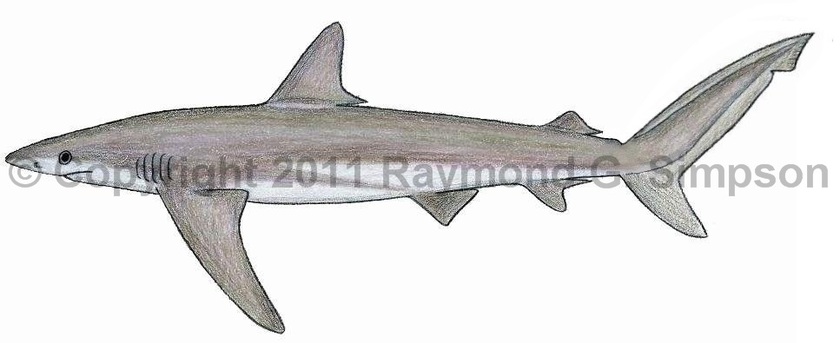
Common Name
Copper Shark
Year Described
Günther, 1870
Identification
Anteroposterior tooth rows: 14-16/14-15 on each side; 29-36/29-35 total
Vertebrae: 96-110 precaudal, 179-203 total
A large and fairly slender shark with a moderately large and bluntly rounded snout. A small to fairly large eye. Distance between nostrils 1.1-1.4 times in pre-oral distance. Nasal flaps rudimentary or very short. Upper labial furrows short. Interdorsal ridge is absent or very weak. Long preanal ridge absent. No keels on caudal peduncle. Gill slits rather long (2.5-4.1% TL). Teeth in upper jaws broad-based with narrow, erect to oblique cusps, with finely serrated edges. Lower jaw teeth thick-based and weakly serrated, with slender, almost erect cusps. First dorsal fin fairly high (6.8-9.7% TL) with a convex anterior margin, an angular to rounded tip, and inserted over rear margin of pectoral fin. Second dorsal fin much smaller (2.0-2.5% TL) and inserted directly above anal fin. Both dorsal fins with extended free posterior tips (second dorsal free tip shorter than fin height). Anal fin similar in size to second dorsal fin. Pelvic fin origin well behind free tip of first dorsal. Pectoral fin long, with a slightly concave posterior margin and an pointed tip.
Color
Brownish-gray to coppery-brown above, abruptly whitish below. Fins mostly body colored except dusky tips to the pectoral and pelvic fins. Caudal fin can have dark margins.
Size
Mature adults from 200-250cm TL (females average slightly larger). Newborns from 59-70cm. Maximum size to 260cm TL.
Habitat
Continental shelf waters from nearshore to inshore oceanic. Most common at the surface or up to 100m over the bottom.
Range
Temperate to subtropical: southern Brazil to Argentina. A possible record from the Gulf of Mexico.
References
Castro, J.I. 2011. The Sharks of North America. Oxford University Press, 640 pp.
Compagno, L.J.V. 2002. Sharks. In: Carpenter, K.E. (Editor) FAO Identification Guide for Fishery Purposes. The Living Marine Resources of The Western Central Atlantic. Volume 1: Introduction, mollusks, crustaceans, hagfishes, sharks, batoid fishes, and chimaeras. ASIH Special Publication No. 5. FAO, Rome.
Compagno, L., M. Dando, and S. Fowler. 2005. Sharks of the World. Princeton University Press, 480 pp.